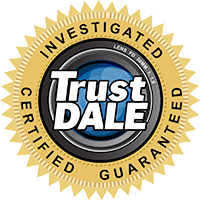Haunted by the Unseen: Hidden Dangers Lurking in Your Home

Owning a home is a dream for many, but what most homeowners don’t realize is that beyond the visible issues — like cracks in the foundation or peeling paint—there are often invisible signs that can lead to bigger problems if ignored. These subtle yet critical factors can “haunt” your home, manifesting in costly repairs or even health hazards down the line. Let’s uncover the hidden signs that could affect your home in ways you might not see coming.
1. Poor Ventilation
Poor ventilation may not be visible, but you’ll feel its effects. Stuffy air, condensation on windows, and persistent odors are all signs that your home isn’t properly ventilated. This can lead to mold growth, trapped moisture, and structural damage. Over time, poor air quality also affects your health, potentially triggering allergies or respiratory issues.
How to spot it: Stale air, windows that fog up frequently, or rooms that feel too humid, especially in basements and bathrooms.
2. Hidden Water Leaks
While major leaks leave visible damage, minor leaks can go unnoticed for months or even years, quietly wreaking havoc on your home. Hidden leaks from pipes, roofs, or appliances can lead to mold, mildew, wood rot, and even foundation damage. Water can seep into unseen areas, such as your crawl space or basement, compromising the structural integrity of your home over time.
How to spot it: Look for small signs like a musty smell, slight discoloration on walls or ceilings, or unexplained increases in your water bill.
3. Unseen Electrical Issues
Faulty wiring or overloaded circuits are common invisible dangers in homes. They may not be immediately visible but can cause flickering lights, buzzing sounds, or even power outages. Worse, they pose a significant fire risk if left unchecked. Older homes are particularly susceptible to outdated electrical systems that can’t keep up with modern power demands.
How to spot it: Lights that dim or flicker, warm outlets, or frequent breaker trips are telltale signs.
4. Subtle Foundation Shifts
Your home’s foundation might be shifting without you noticing it right away. Over time, even slight movements in the soil under your home can lead to uneven floors, cracks in the walls, and doors that don’t close properly. Left unattended, foundation issues can be extremely costly to fix and affect the overall stability of your home.
How to spot it: Look for small cracks in the walls, especially around windows and door frames, doors that stick, or gaps forming between the floor and the baseboards.
5. Pest Infestations
You may not always see pests, but they leave behind subtle clues of their presence. Termites, rodents, and other critters can silently cause significant damage to your home’s structure, insulation, and wiring. The damage caused by termites, for example, often isn’t visible until the infestation has already become severe.
How to spot it: Droppings, chewed-up wires, wood that sounds hollow when tapped, or strange scratching sounds in the walls or attic.
6. Radon and Other Invisible Gases
Radon is a colorless, odorless radioactive gas that can seep into your home through cracks in the foundation. Prolonged exposure to radon is the second leading cause of lung cancer in the U.S. Other gases like carbon monoxide can also accumulate in poorly ventilated spaces, leading to health risks.
How to spot it: Unfortunately, these gases can’t be detected without proper testing. Regular radon and carbon monoxide tests are essential for long-term safety.
7. High Humidity Levels
Humidity levels that are too high or too low can cause a range of problems, from mold and mildew growth to cracking wood and peeling paint. Overly humid conditions can make your home uncomfortable and unhealthy, especially if you or a family member suffers from asthma or allergies.
How to spot it: Use a hygrometer to monitor indoor humidity levels. It is recommended that humidity levels stay under 55 percent. Signs of high humidity include condensation on windows and persistent dampness in the home.
8. Old Insulation
Your home’s insulation may not show visible wear and tear, but over time, it can lose its effectiveness. This means your home might not retain heat as well as it used to, causing your energy bills to spike. Old insulation can also harbor dust, allergens, and even pests.
How to spot it: A spike in energy costs, rooms that are noticeably colder or hotter than others, or drafts around doors and windows.
How to Protect Your Home from These Haunting Signs
Schedule Regular Inspections: An annual home inspection can catch hidden problems before they become major issues. Professional inspectors know what signs to look for and can save you a lot of money in the long run.
Install Detectors: Carbon monoxide and radon detectors are inexpensive and can help keep your family safe from invisible gases. It’s a small investment with potentially life-saving benefits.
Monitor Humidity and Ventilation: Make sure your home has adequate ventilation, especially in bathrooms and kitchens. Use dehumidifiers to control moisture and prevent mold.
Pay Attention to Subtle Changes: Whether it’s a crack in the wall, a musty smell, or a buzzing outlet, small signs can hint at bigger issues. Don’t ignore these signals — they may be the first signs of a problem that will cost you dearly later.
Owning a home is about more than what meets the eye. By keeping an eye out for these invisible signs, you can maintain a safe, healthy, and stable home for years to come.
 4.9
4.9 



